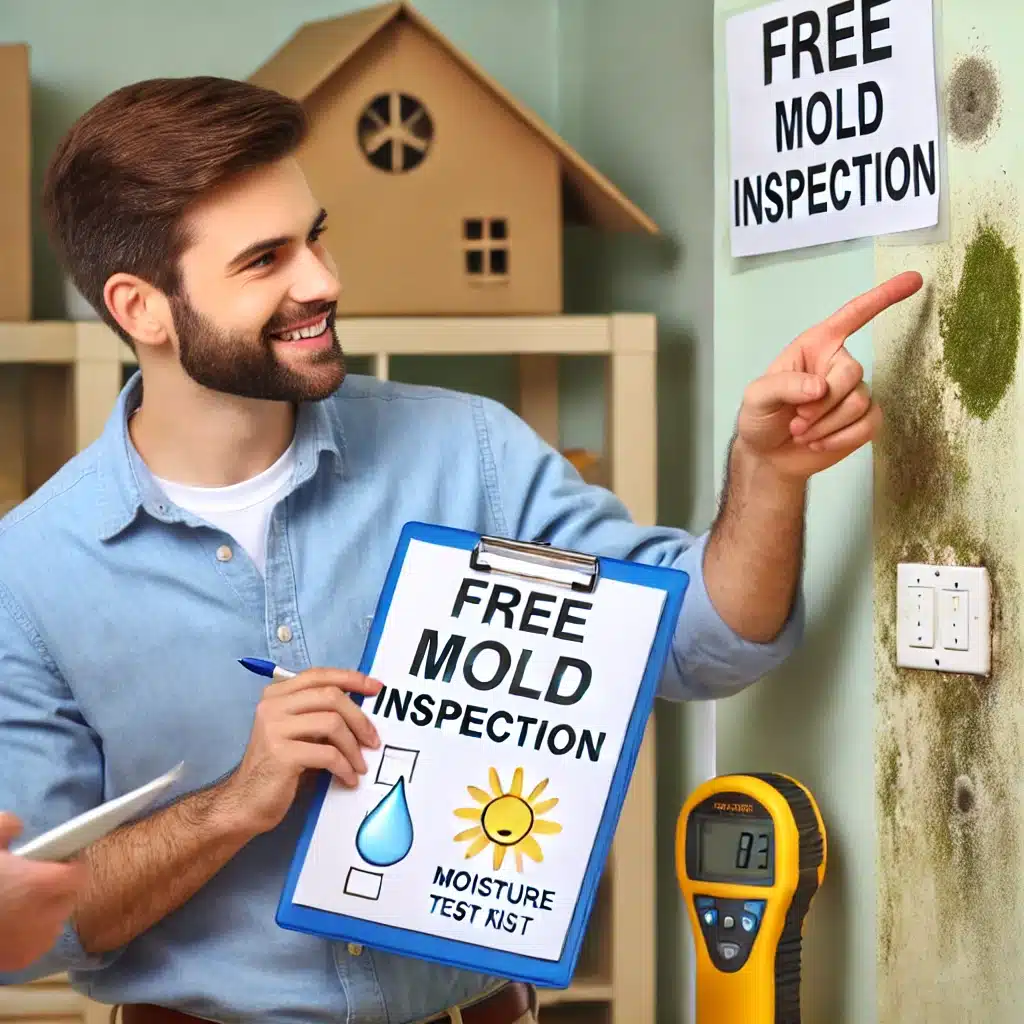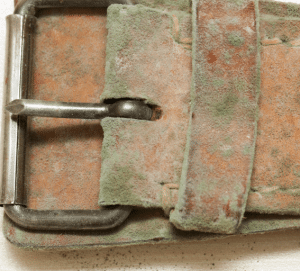Mold is a persistent issue that can damage properties and pose health risks to those living or working there.
Mold thrives in damp, humid environments, growing rapidly and spreading through walls, floors, and ceilings. Regular mold testing is essential to spot and tackle mold growth before it becomes a bigger problem.
Mold exposure can cause health issues like respiratory problems, allergies, headaches, and even weaken the immune system. It’s especially harmful to children, the elderly, and those with pre-existing respiratory conditions.
Early detection and remediation of mold can prevent these health risks and keep your environment safe.
Additionally, mold can damage the structure of buildings by weakening materials and compromising walls, floors, and ceilings. Ignoring mold growth can lead to expensive repairs and renovations. Investing in mold testing can protect your property and save you from future financial burdens.
The Costs of Mold Inspections
The costs of mold inspections and mold testing can vary based on the property’s size, suspected mold growth extent, and location. Professional mold inspection and testing can range from a few hundred to over a thousand dollars.
However, these costs are often a fraction of the expenses for remediating extensive mold growth or addressing health issues from prolonged exposure.
Early identification and resolution of mold issues through inspection and testing can save homeowners and business owners significant money in the long run.
Some mold inspection companies offer free initial consultations or inspections to assess the situation and provide quotes for comprehensive inspection and mold testing. These free services help determine the need for further action and understand potential costs.
How to Find Companies that Offer Free Mold Inspections
Finding companies that offer free mold inspections can be a cost-effective way to assess the presence of mold in your property. Here are some strategies to locate these companies:
Online searches
Conduct online searches using keywords such as “free mold inspection” or “complimentary mold inspection” along with your location. Many companies advertise their free services online to attract potential customers.
Local Directories
Check local business directories, both online and physical, for mold inspection companies in your area. Some directories may indicate which companies offer free initial inspections or consultations.
Social media
Utilize social media platforms like Facebook and Twitter to search for mold inspection companies in your area. Many businesses actively promote their services and special offers on social media.
Referrals
Ask friends, family members, or neighbors if they have used a mold inspection company that offered a free initial inspection. Word-of-mouth recommendations can be valuable in finding reputable service providers.
Home improvement stores
Visit local home improvement stores and inquire about any partnerships or recommendations for mold inspection companies that offer free services.
Researching and Selecting a Reputable Mold Inspection Company
When researching and selecting a reputable mold inspection company, it is crucial to consider several factors to ensure you receive quality service and accurate results. Here are some key considerations:
Licensing and certification
Ensure the company and its inspectors hold the necessary licenses and certifications required in your state or local area. Look for certifications from reputable organizations like the Indoor Air Quality Association (IAQA) or the Institute of Inspection, Cleaning, and Restoration Certification (IICRC).
Experience and expertise
Evaluate the company’s experience in conducting mold inspections, particularly in properties similar to yours. Experienced inspectors will have a better understanding of where to look for mold growth and how to interpret the results accurately.
Reputation and reviews
Check out online reviews and testimonials from past customers to see if the company is known for being professional, reliable, and keeping customers happy. This can help you get a feel for their reputation. Reputable companies will have a track record of positive reviews and satisfied clients.
Sampling and testing methods
Inquire about the company’s sampling and testing methods for mold. Reputable inspectors will use advanced techniques like air sampling, surface sampling, and moisture mapping to accurately assess the presence and extent of mold growth.
Reporting and documentation
Evaluate the company’s reporting and documentation processes. A thorough mold inspection report should include detailed findings, recommendations, and supporting evidence such as photographs and laboratory test results.
Insurance and liability coverage
Ensure the company carries adequate insurance and liability coverage to protect you in case of any damages or accidents during the inspection process.
What Happens During a Free Mold Inspection?
When you schedule a free mold inspection, it is essential to understand what to expect during the process. Here are some typical steps and procedures:
Initial consultation
The mold inspector will likely begin with an initial consultation to gather information about your concerns, the property, and any visible signs of mold growth. This consultation may be conducted over the phone or in person.
Visual inspection
The inspector will perform a visual inspection of the property, paying close attention to areas that are prone to moisture accumulation, such as bathrooms, basements, and attics. They will look for visible signs of mold growth, water damage, and potential sources of moisture intrusion.
Moisture testing
Using specialized equipment, the inspector may conduct moisture testing on various surfaces and materials to identify areas with elevated moisture levels, which can contribute to mold growth.
Air sampling (optional)
Depending on the scope of the free inspection, the inspector may perform air sampling to detect the presence and concentration of mold spores in the air. This can help determine the extent of mold growth and potential health risks.
Preliminary findings
After completing the inspection, the inspector will typically provide you with preliminary findings and recommendations. This may include advice on addressing any visible mold growth, potential sources of moisture, or the need for further testing or remediation.
Questions to Ask During a Free Mold Inspection
During a free mold inspection, it is essential to ask the right questions to ensure you understand the findings, recommendations, and next steps. Consider these important questions:
- What areas of the property were inspected, and what methods were used?
- Were any visible signs of mold growth found, and if so, where?
- What are the potential causes or sources of the mold growth?
- Were any moisture issues or water damage identified, and what might be the underlying causes?
- What are the potential health risks associated with the mold growth found?
- Is additional testing or sampling recommended, and what would be the cost?
- If mold remediation is necessary, what are the recommended steps and estimated costs?
- What preventive measures can be taken to reduce the risk of future mold growth?
- Can you provide a detailed inspection report with your findings and recommendations?
- What is the company’s experience and expertise in mold inspection and remediation?
Steps to Take After a Free Mold Inspection
After receiving the results of a free mold inspection, it is essential to take appropriate steps to address any identified issues and prevent further mold growth. Consider these recommended steps:
Review the inspection report
Carefully review the inspection report provided by the mold inspector. Ensure you understand the findings, recommendations, and any potential health or structural risks associated with the mold growth.
Address moisture sources
If the inspection identified moisture sources or water damage contributing to mold growth, take immediate steps to address these issues. This may involve repairing leaks, improving ventilation, or addressing underlying moisture problems.
Consult with a professional
If the inspection revealed significant mold growth or recommended further testing or remediation, consult with a professional mold remediation company. They can provide a comprehensive assessment, develop a remediation plan, and safely remove the mold from your property.
Implement preventive measures
Once the mold issue has been addressed, implement preventive measures to reduce the risk of future mold growth. This may include controlling humidity levels, improving air circulation, and regularly inspecting for moisture or water damage.
Consider additional testing
If the free inspection did not include comprehensive testing, such as air sampling or surface sampling, consider investing in additional testing to better understand the extent and potential health risks of the mold growth.
Monitor and maintain
After addressing the mold issue, continue to monitor the affected areas and maintain appropriate moisture control measures to prevent recurrence.
Seek professional advice
If you are unsure about the best course of action or have concerns about the inspection findings, seek advice from a qualified professional, such as an environmental consultant or a certified industrial hygienist.
Frequently Asked Questions
How frequently should I schedule a mold inspection?
The frequency of mold inspections depends on various factors, such as the age and condition of your property, the climate in your area, and any previous mold issues. As a general guideline, it is recommended to have a professional mold inspection conducted at least once a year, especially in areas with high humidity or after any water damage incidents.
Can I perform a mold inspection myself?
Although you can perform a DIY mold inspection, hiring a professional mold inspector is generally recommended. Professional inspectors have the necessary expertise, equipment, and resources to accurately assess the presence and extent of mold growth, as well as identify potential sources of moisture that may contribute to mold issues.
What should I do if a mold inspection reveals a problem?
If a mold inspection reveals the presence of mold growth, it is crucial to address the issue promptly. Depending on the extent of the problem, you may need to hire a professional mold remediation company to safely remove the mold and address the underlying moisture issues. In some cases, you may need to temporarily vacate the premises during the remediation process.
How much does a professional mold inspection typically cost?
The cost of a professional mold inspection can vary depending on factors such as the size of the property, the location, and the scope of the inspection. On average, a basic mold inspection can cost between $300 and $800, while more extensive inspections or additional testing may cost more.
Can mold inspections be covered by insurance?
In some cases, mold inspections and remediation may be covered by homeowners’ insurance policies, especially if the mold growth is the result of a covered event, such as a burst pipe or storm damage. However, coverage can vary widely depending on the specific policy and circumstances involved. It is recommended to review your insurance policy or consult with your insurance provider to understand your coverage options.
Conclusion
When it comes to safeguarding your home or business, Mold Testing Houston is your trusted partner. Mold testing and mold testing services are crucial for maintaining a healthy and safe environment. By choosing our expert mold testing services, you’re not just protecting your property but also ensuring the well-being of everyone in it.
Our team at Mold Testing Houston is dedicated to providing thorough and reliable mold inspections. We offer free initial consultations to help you understand the situation and determine the next steps. Early detection through our professional mold testing can save you from costly repairs and health issues down the line.
Don’t let mold take over your space. Contact Mold Testing Houston today for a free mold inspection and take the first step towards a mold-free environment. Your health and safety are our utmost priorities, and we’re dedicated to supporting you throughout every step of the process.





